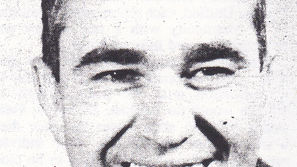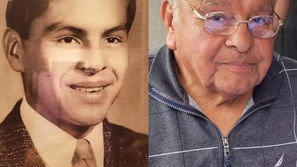Attempted murder in Courthouse Park
- Bill Coate
- Aug 6, 2022
- 3 min read

For The Madera Tribune
The zoo in Courthouse Park, shown here, was almost the scene of a murder in 1917.
It was Sunday, and Maderans living near the Courthouse Park were enjoying a sunny May morning.
William King Heiskell was out surveying his handiwork; after all, he more than any other person, was responsible for the park. He designed it. He built the aviary and the hothouse in which he grew orchids from South America as well as Cherokee pink roses and chrysanthemums. Heiskell had planted sweetpeas of different colors along the lane of small trees next to the highway. Inspired by Holland’s display at the World’s Fair in 1915, he also planted several beds of tulips.
Heiskell had a lot of which he could be proud, and on that quiet Sunday morning, he was taking it all in, until he heard that blood-curdling scream resounding across the park. “Murder! Help! Awk! Someone was definitely in distress.
As Heiskell ran to the park from the north end of the Courthouse, he met Nightwatchman Alex Black, who was seeking the source of the same commotion. At the same time, the entire populace in the vicinity was awakened. Women and men rushed to their windows and looked out. No one could be seen, and yet those terrible cries indicated that a bloody battle was raging somewhere in the park.
Then they came upon the trouble. The Madera County Courthouse Park was the home of a pet raccoon. It had lived on the premises for a number of years and was a favorite of every school child who passed by. Normally, the animal was a lovable little creature, but on this particular morning, it was about to rob the park of one of Heiskell’s most prized possessions.
Heiskell had included as part of his park menagerie, a rather exotic bird — a parrot. Now this was not just any old parrot. It could say hello for the park visitors and in a very harsh voice, he could also mimic the songs of the canaries. Actually the bird could perform a variety of other quite entertaining feats, and Heiskell loved him.
Well, on the Sunday morning in question, Polly had left its perch and landed on the ground. In an instant the raccoon sensed a meal, and the parrot was in serious danger. The raccoon made a break for the bird and managed to get hold of one wing. At that point, the bird began pecking furiously at its attacker with its beak and “crying bloody murder.”
William King Heiskell and the nightwatchman arrived just in the nick of time. They rescued the bird and tied up the raccoon. Polly limped back to its perch, nursing a badly dilapidated wing and mourning the loss of a lot of feathers.
The raccoon was sent immediately into exile. He was given to Dan White, the janitor at the high school, and his little house along with his private bath was dispatched with him. Heiskell put out the word that since he “valued the parrot more highly than the raccoon,” if the latter was ever found about his old haunts again, “he would surely be roasted with sweet taters and brown gravy.”
As for Polly, she had her own peculiar ending. Having been raised in the company of a group of miners, she was privy to a censored word or two, which she was not loath to use on occasion. It was a well-known fact that Polly would at times insist on including some of these spicy expressions in her everyday vocabulary in the park.
As the years passed, Polly’s language became worse and worse. She was not content to greet park visitors with the usual hello; she would often add her own jargon, which included the sounds of miners attempting to get their horses going.
In time, Heiskell began to receive complaints about Polly’s language. Many of the locals apparently thought that she was a bad influence on the younger generation. Finally, the park superintendent relented and gave Polly to his daughter, Mrs. Frank Desmond, where the bird lived out its natural life.
After her demise, Polly was taken to a taxidermist, stuffed, and then given to the Madera County Historical Society. Today she can be seen in the main hallway of the Courthouse Museum.
Perched as she is in her glass cage, Polly watches every visitor, but now she is mute. Her offensive phrases no longer blister the air. All is tranquil with the bird, and there are no visible reminders of that Sunday afternoon in 1917, when Polly’s diatribes were almost put to an end by her ring-tailed nemesis.


























Comments